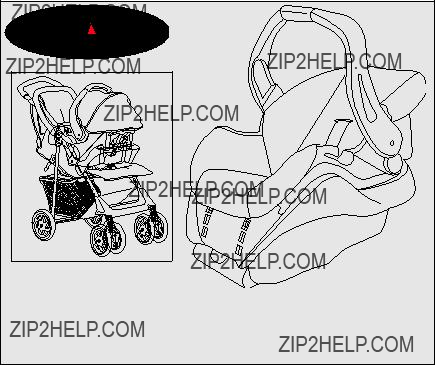


1.0 Warnings to Parents and Other
2.1 Register Your Infant Restraint . . . . . . . . . . . . . . . . . . . . . . .6 2.2 Recall Information . . . . . . . . . . . . . . . . . . . . . . . . . . . . . . . .6 2.3 If You Need Help . . . . . . . . . . . . . . . . . . . . . . . . . . . . . . . . .7
3.0 Features and
3.1
4.0 Important
4.1 Warnings for Use as Infant Restraint . . . . . . . . . . . . . . . . .18 4.2 Warning for Use With a Stroller . . . . . . . . . . . . . . . . . . . . .20 4.3 Additional Warnings for Use as Carrier . . . . . . . . . . . . . . .21 4.4 Height and Weight Limits . . . . . . . . . . . . . . . . . . . . . . . . . .22
5.0 Infant Restraint
5.1 Vehicle Seat Requirements . . . . . . . . . . . . . . . . . . . . . . . .23 5.2 Vehicle Seat Belt Requirements . . . . . . . . . . . . . . . . . . . .24
2

5.2.1 UNSAFE Vehicle Belt Systems . . . . . . . . . . . . . . . . .25 5.2.2 SAFE Vehicle Belt Systems . . . . . . . . . . . . . . . . . . .26 5.3 LATCH locations . . . . . . . . . . . . . . . . . . . . . . . . . . . . . . . . .28
6.0 Using Infant
6.1 Positioning Harness Straps . . . . . . . . . . . . . . . . . . . . . . . .29
6.1.1
6.1.2
6.2 Securing Child in Infant Restraint . . . . . . . . . . . . . . . . . . .33
6.2.1
6.2.2
6.3 Installing Infant Restraint/Base Using Vehicle Belt . . . . . .36 6.4 Using LATCH to Install Base . . . . . . . . . . . . . . . . . . . . . . .39 6.5 Reclining Infant Restraint/Base . . . . . . . . . . . . . . . . . . . . .40
7.0 Additional
7.1 Airplane Use . . . . . . . . . . . . . . . . . . . . . . . . . . . . . . . . . . .43
7.2 Storing LATCH . . . . . . . . . . . . . . . . . . . . . . . . . . . . . . . . . .43
7.3 Cleaning and Maintenance . . . . . . . . . . . . . . . . . . . . . . . .44
Replacement Parts . . . . . . . . . . . . . . . . . . . . . . . . . . . . . . . . . . . . .48
3
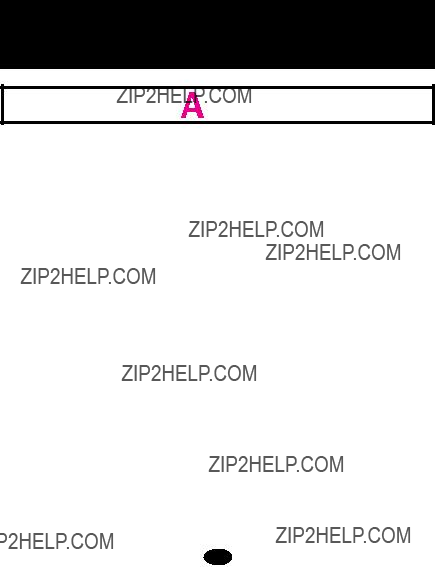
1.0Warnings to Parents and Other Users
No infant restraint can guarantee protection from injury in every situation. However, proper use of this infant restraint reduces the risk of serious injury or death to your child.
Failure to properly use this infant restraint increases the risk of serious injury or death in a sharp turn, sudden stop or crash. Your child???s safety depends on you installing and using this infant restraint correctly.
Even if using this infant restraint seems easy to figure out on your own, it is very important to READ THE OWNER???S MANUAL.
The manual is located in the back pocket of the infant restraint. You must also read your vehicle owner???s manual.
Your child???s safety depends on:
1. Choosing a suitable location in your vehicle. Some seating positions, such as those equipped with air bags, may not be safe locations for this infant restraint.
2. Inserting the harness straps in the proper slots for your child. 3. Properly securing your child in the infant restraint.
4. Placing infant restraint/base in a
4

5.Properly routing the vehicle seat belt or LATCH.
6.Properly reclining the infant restraint.
7.Properly securing the infant restraint in the vehicle using a seat belt designed to restrain an infant restraint or by using LATCH. Many seat belts are NOT safe to use with infant restraints, even though they can easily be threaded through the infant restraint!
5
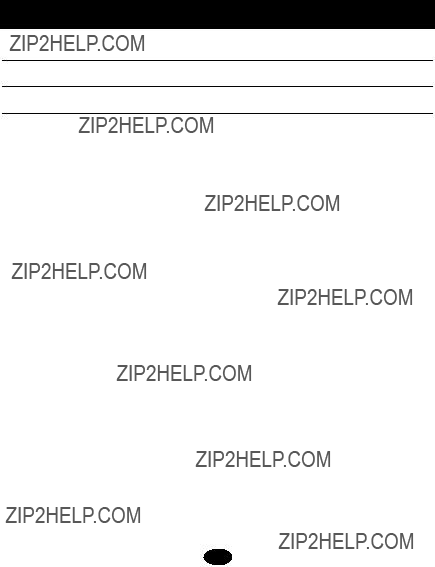
Model Number:
Manufactured in:
Purchase Date:
2.1 Register Your Infant Restraint
Please fill in the above information. The model number and the manufactured in (date) can be found on a label underneath your infant restraint. Fill out the prepaid registration postcard attached to the seat cover and mail it today.
Child restraints could be recalled for safety reasons. You must register this restraint to be reached in a recall. Send your name, address and model number to:
Graco Children???s Products Inc.
150 Oaklands Blvd.
Exton, PA 19341
or call
2.2 Recall Information
??? Call the U.S. Government???s Vehicle Safety Hotline at
??? Graco:
6

7
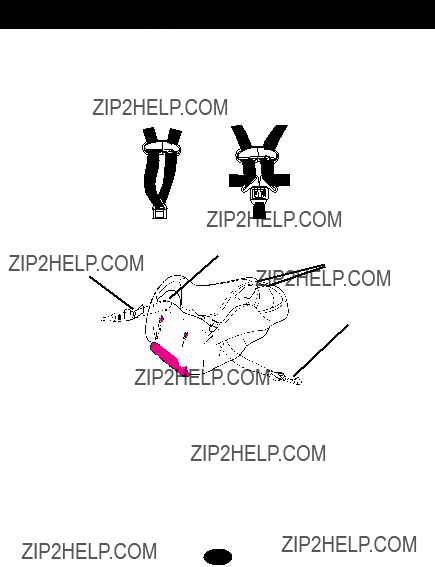
Each model of the infant restraint comes with different harness options. To adjust your infant restraint properly, it is very important to follow the instructions that are appropriate for the model you have purchased.
Adjustable Foot 


Base
United States Federal Motor Vehicle Safety Standards have defined a new system for installing car seats in vehicles. The system is called
LATCH.
* LATCH may be used IN PLACE of vehicle belt ONLY if vehicle is equipped with LATCH anchor points. Please refer to vehicle owners manual for LATCH locations.
8
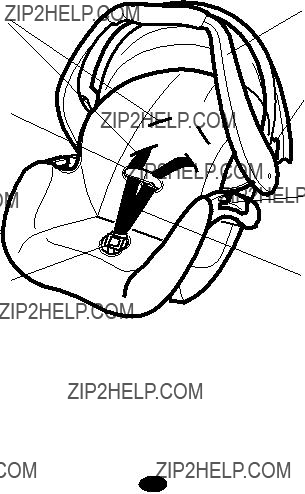
3.1
Harness
slots
FRONT VIEW:
Handle
Harness
clip
Harness
buckle
Handle adjustment button
Vehicle belt hook
Harness
straps
9
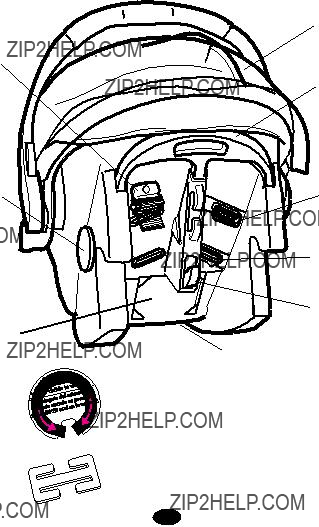
Harness tightener
Level indicator*
Owner???s manual pocket
*Level Indicator
**Locking Clip
REAR VIEW:
(on certainCanopymodels)
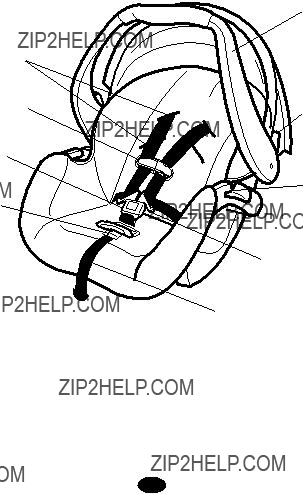
3.2
11
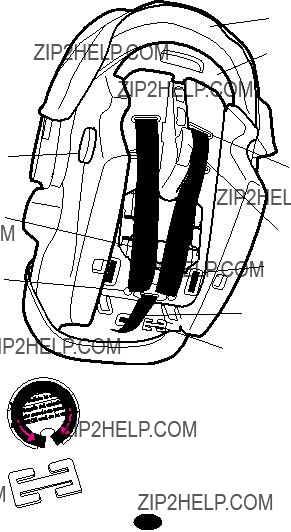
Level indicator*
Owner???s manual pocket
Metal junction plate
*Level Indicator
**Locking Clip
REAR VIEW:
(on certainCanopymodels) Release handle
Harness slot
Attachment
latch
Waist strap anchor buckle
Harness adjustment strap
Locking clip**
The level indicator is attached to the side of the infant restraint, and indicates whether or not the infant restraint is properly reclined.
The locking clip is stored on the bottom of the infant restraint. You will need to use it with certain types of vehicle seat belts.
12
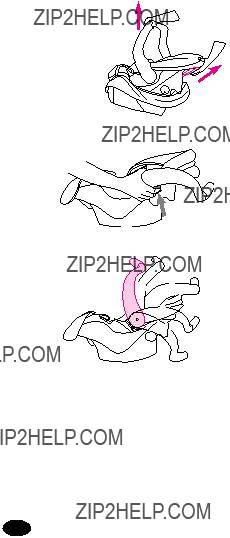
3.3 Removing and Attaching Base
To remove infant restraint, squeeze handle at back of seat and lift infant restraint from base as shown ???.
To put infant restraint in base, push infant restraint down until it clicks into base. Pull up on infant restraint to be sure it is latched
firmly into base.
3.4 Adjusting Handle
1. Press handle adjustment buttons on both sides of handle ???.
2. Rotate handle until it clicks into any of the 5 positions:
Position A: MUST be used
when carrying by handle, Position B,C,D: are convenience
E: positions,
Position is the sitting position,
NEVER use positions B or C
in the vehicle.
BOTH handle adjustment buttons must pop out to lock handle in place ???.
3. Push and pull on the handle to be sure it is locked firmly in position.
???
???
BC???
D
 E Sitting
E Sitting
13
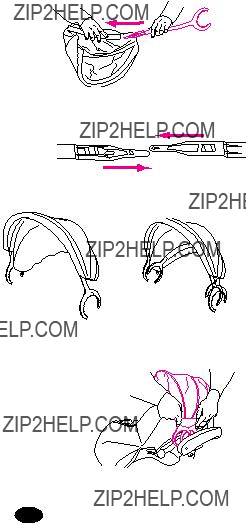
3.5 Attaching Canopy
1. Infant restraint comes with four (two on certain models) identical canopy support parts.
Thread one canopy support completely through one sewn tunnel ???.
2. Slide straight end of a second support into the straight end of the first support ???.
(on certain models)
???
???
4.Attach canopy in the areas between the infant restraint and the handle base ???.
To remove canopy, reverse the steps.
 ???
???
???
14
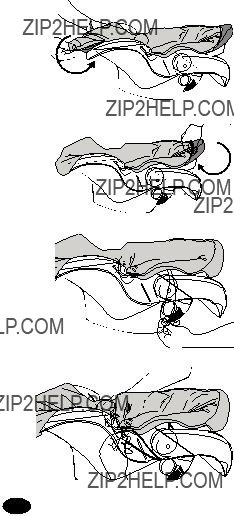
3.6 Seat Pad Assembly
(on certain models)
Step 1.???
Wrap bottom edge of seat pad around the foot end of seat as shown.
Step 2.
Wrap the top edge of the seat pad around the head end of the seat as shown.
Step 3.
On side of seat, wrap elastic strap around the handle as shown. Skip Steps 3 and 4 if your model does not include straps.
Step 4.
Fasten strap to hook that is attached to the seat pad. Repeat steps for the elastic strap and hook on the other side of the seat pad.
??? 



???









???
15
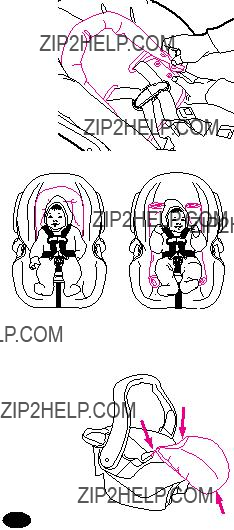
If your model does not include a head support, you may want to use a rolled towel or a blanket for support ???. MAKE
SURE THAT NOTHING
INTERFERES WITH THE HARNESS. It must still be flat and snug against your child???s shoulders.
3.8 Cold Weather Boot
(on certain models)
Some models come with a cold weather boot. To use, wrap elastic around bottom of seat and place both elastic loops around vehicle belt hooks as shown ???.
???
???
16
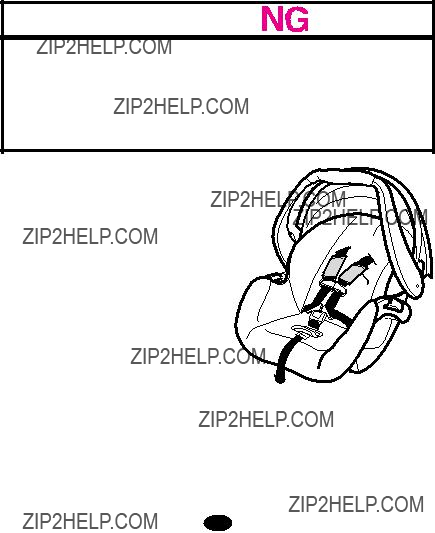
3.9 Harness Covers (on certain models)
To prevent ejection in sudden stop or crash:
??? Always make sure shoulder straps are threaded through slots and properly positioned on shoulders.
??? Make sure that harness covers do not interfere with placement of the chest clip at armpit level.
17

4.1Warnings for Use as Infant Restraint
???DO NOT INSTALL OR USE THIS INFANT RESTRAINT
AND BASE UNTIL YOU READ AND UNDERSTAND THE
INSTRUCTIONS IN THIS MANUAL AND IN YOUR VEHICLE OWNER???S MANUAL. DO NOT let others install or use the infant restraint unless they understand how to use it.
???FAILURE TO PROPERLY USE THIS INFANT RESTRAINT
AND BASE INCREASES THE RISK OF SERIOUS INJURY OR DEATH IN A SUDDEN STOP OR CRASH. Your child can be injured in a vehicle even if you are not in a crash. Sudden braking and sharp turns can injure your child if the infant restraint is not properly installed or if your child is not properly secured in the infant restraint.
???PLACE THIS INFANT RESTRAINT IN A
???DO NOT PLACE THIS INFANT RESTRAINT
IN A VEHICLE SEATING LOCATION THAT HAS A FRONT AIR BAG. If the air bag inflates, it can hit the infant restraint with great force and cause serious injury or death to your child. Check vehicle owner???s manual for information about side air bags and infant restraint installation.
18

???SOME SPECIAL NEEDS CHILDREN, such as
???According to accident statistics,
PROPERLY RESTRAINED IN REAR VEHICLE SEATING
POSITIONS, RATHER THAN FRONT SEATING POSITIONS.
For a vehicle with a front passenger air bag, refer to your vehicle owner???s manual as well as these instructions for infant restraint installation.
???NEVER LEAVE YOUR CHILD UNATTENDED.
???NEVER LEAVE AN INFANT RESTRAINT AND BASE UNSECURED IN YOUR VEHICLE. An unsecured infant
restraint or base can be thrown around and may injure occupants in a sharp turn, sudden stop or crash. Remove it or make sure that it is securely belted in the vehicle. If not using LATCH, make sure LATCH connectors are properly stored on base.
???REPLACE THE INFANT RESTRAINT AND BASE AFTER AN ACCIDENT OF ANY KIND. An accident can cause damage to the infant restraint that you cannot see.
???STOP USING INFANT RESTRAINT AND BASE AND THROW IT AWAY after the date molded into the underside of the infant restraint.
19

???DO NOT MODIFY YOUR INFANT RESTRAINT AND BASE or use any accessories or parts supplied by other manufacturers.
???NEVER USE INFANT RESTRAINT AND BASE IF IT HAS DAMAGED OR MISSING PARTS. DO NOT use a cut, frayed or damaged infant restraint harness, LATCH belt or vehicle seat belt.
???THE INFANT RESTRAINT CAN BECOME VERY HOT IF LEFT IN THE SUN. Always touch the surface of any metal or plastic parts before putting your child in the infant restraint.
???THIS CHILD RESTRAINT CONFORMS to all applicable Federal Motor Vehicle Safety Standards and is certified for use in motor vehicles and aircraft.
???NEVER GIVE THIS INFANT RESTRAINT AND BASE to someone else without also giving them this manual.
???NEVER USE A
4.2 Warning for Use With a Stroller
??? USE ONLY WITH STROLLERS THAT ARE PART OF THE GRACO TRAVEL SYSTEM. Refer to stroller instruction sheet for details about how to attach the infant restraint to your stroller. If you do not have an instruction sheet, please call
??? Improper use of Graco???s infant car seat with other manufacturer???s strollers may result in serious injury or death.
20
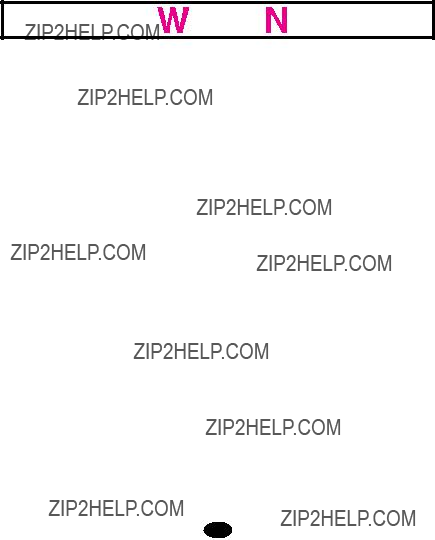
4.3 Additional Warnings for Use as Carrier
??? FALL HAZARD: Child???s movements can slide carrier.
NEVER place carrier near edges of countertops, tables or other high surfaces. Always stay within arms reach whenever carrier is not on floor/ground.
BE SURE handle locks into position before lifting carrier. NEVER place carrier in the top of a shopping cart.
??? SUFFOCATION HAZARD: Infant carrier can roll over on soft surfaces and suffocate child. Never place carrier on beds, sofas or other soft surfaces.
??? STRANGULATION HAZARD: Child can strangle in loose restraint straps. Always use harness, never leave child in carrier when straps are loose or undone.
??? KEEP STRINGS AND CORDS AWAYFROM CHILD. Strings and cords can cause strangulation.
DO NOT place carrier near a window where cords from blinds or drapes can strangle a child.
DO NOT hang strings on or over the carrier.
DO NOT place items with a string around a child???s neck, such as hood strings, pacifier cords, etc.
DO NOT attach strings to toys.
21
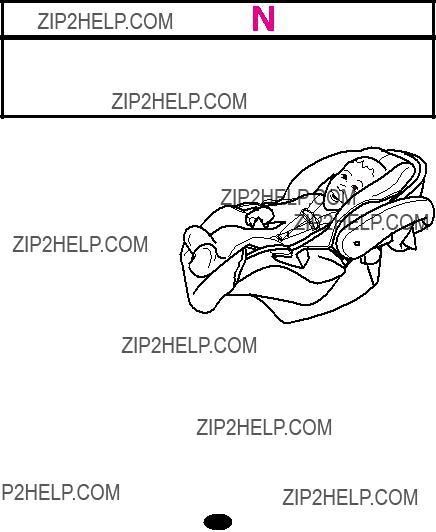
4.4 Height and Weight Limits
FAILURE TO USE INFANT RESTRAINT IN A MANNER
APPROPRIATE FOR YOUR CHILD???S SIZE MAY INCREASE
THE RISK OF SERIOUS INJURY OR DEATH.
Your child MUST meet all requirements:
??? WEIGHT:
??? HEIGHT: 29 inches (73 cm) or less
22
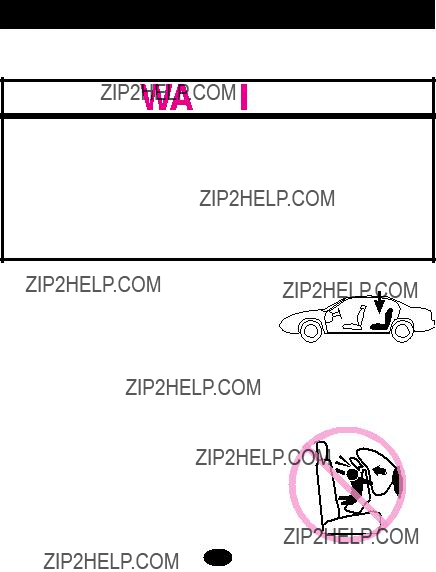
5.1 Vehicle Seat Requirements
IMPROPER PLACEMENT OF THE INFANT RESTRAINT
INCREASES THE RISK OF SERIOUS INJURY OR DEATH.
Some seating positions in your vehicle may not be safe for this infant restraint. Some vehicles do not have any seating positions that can be used safely with the infant restraint. If you are not sure where to place the infant restraint in your vehicle, consult your vehicle owner???s manual or call Graco at
???
???
23
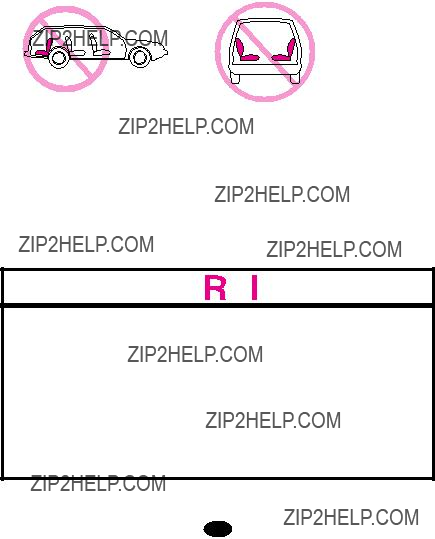
??? The VEHICLE seat must face forward.
??? DO NOT use infant restraint on vehicle seats with seat backs that will not lock in an upright position. DO NOT use seats that can fold down without having to release a lock or latch of some kind. These seats can fly forward and strike the child in a sudden stop or crash.
5.2 Vehicle Seat Belt Requirements
MANY SEAT BELT SYSTEMS ARE NOT SAFE TO USE WITH
THE INFANT RESTRAINT. THE VEHICLE SEAT BELT MUST BE
DESIGNED TO HOLD THE INFANT RESTRAINT TIGHTLY AT
ALL TIMES.
Pay careful attention to these systems; some of the seat belts that are not safe to use look very much like seat belts that are safe to use. If you are unsure, consult your vehicle owner???s manual or Graco at
24

5.2.1 UNSAFE Vehicle Belt Systems
DO NOT use any of the following systems to secure the infant restraint. LATCH can be used IN PLACE OF the vehicle belt system. Please refer to vehicle owners manual for LATCH locations.
??? Lap Belts with EmergencyLocking Retractor (ELR)
This lap belt stays loose and can move until it locks in a crash or sudden stop.
??? Combination Lap/Shoulder Belt with Retractor
Each strap has a retractor at one end and is attached to the latch plate at the other end.
??? Passive Restraint- Lap Belt with Motorized ShoulderBelt
??? Passive Restraint- Lap or ShoulderBelt Mounted on Door DO NOT use vehicle belts that are attached to the door in any way or that move along a track to automatically surround the
passenger when the door is closed.
??? Lap Belts Forward of Seat Crease
25

5.2.2 SAFE Vehicle Belt Systems
THE FOLLOWING BELT SYSTEMS CAN BE USED WITH YOUR INFANT RESTRAINT, IF the seat location meets all other requirements of these instructions and those in your vehicle owner's manual. LATCH can be used in place of the vehicle belt system. Please refer to vehicle owners manual for LATCH locations.
??? Lap Belts - Manually Adjusted
When buckled, the belt is tightened manually by pulling on the excess belt while pushing down hard on the infant restraint.
??? Lap Belts with Automatic Locking Retractor (ALR)
The automatic locking retractor will not permit the lap belt to lengthen once it is buckled. Tighten the belt by feeding the belt back into the retractor while pushing down hard on the infant restraint.
??? Combination Lap/Shoulder Belt
with Locking Latch Plate
Once it is buckled, this type of belt has a latchplate that will not allow the lap portion of the belt to loosen. Belt is tightened by pulling hard on the shoulder portion of the vehicle belt while pushing down hard on the infant restraint.
26
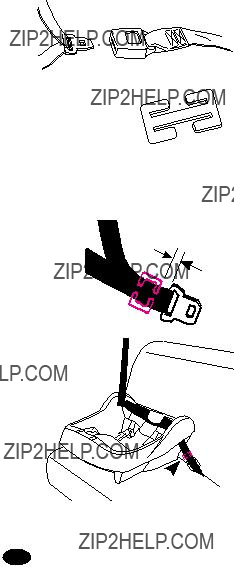
??? Combination Lap/Shoulder
Belt with Sliding Latch Plate
This belt has a latchplate that slides freely along the belt.
This belt MUST be converted to prevent movement of the lap portion of the belt. You must use the locking clip provided with the infant restraint, unless your vehicle's seat belt can be converted in another way as described in your vehicle owner's manual.
To Install Locking Clip:
1. Tighten the buckled belt by pushing down hard on the infant restraint and pulling hard on the shoulder belt.
2. While pushing down on infant restraint, pinch the two straps together behind the buckle tongue. Unbuckle the
belt without allowing it to slip. 3. Connect lap and shoulder belts with locking clip as shown ???
and ???.
4. Rebuckle belt. Check that lap belt does not move by pulling and pushing hard on infant restraint. If belt loosens or lengthens, repeat procedure.
Locking clip
??
inch???
???
27
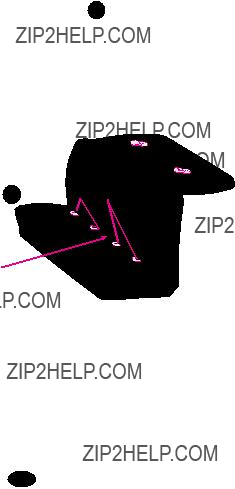
See your vehicle owner???s manual for exact locations, anchor identification, and requirements for use with an infant restraint.
Typical seat in a passenger vehicle. Other vehicle types may have different LATCH locations or different markings.
Vehicle
Seat Crease
LATCH is defined as anchorages 280mm (11.02 inches) on center. As a manufacturer, we do not recommend using the LATCH system in the center position if it exceeds this length.
28

6.1 Positioning Harness Straps
29
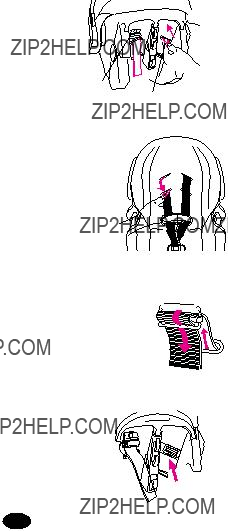



 ???
???
Harness anchor buckle
???
 ???
???
 ???
???
30
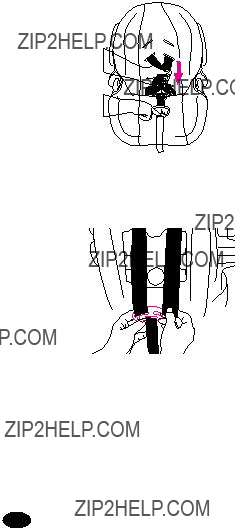
6.1.2
1. Depress the harness adjustment button under the seat flap ???. Pull the shoulder straps out to loosen the harness.
2. Behind seat, remove the ends of the two shoulder straps from the metal junction plate ???.
3. From front, pull straps through the harness slots and then reinsert them through the appropriate slots.
4. Behind seat, push both shoulder straps UNDER owner???s manual pocket and out the bottom.
5. Reassemble the strap ends onto the metal junction plate ???. Follow the appropriate instructions for a smaller or larger baby on the following page.
???
Harness adjustment button



 ???
???
6. SAFETY CHECK:
After the harness has been completely reinstalled,
a) CHECK that harness straps are not twisted in front or back. b) CHECK that straps are secure by pulling on them.
31
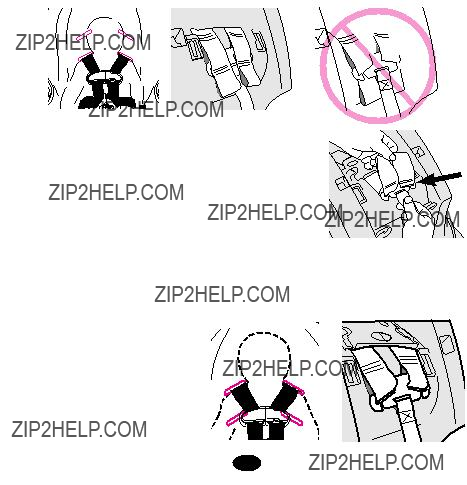
FOR SMALLER BABY:
Use the lower harness slots ??? (if they are even with or just below your child???s shoulders) and the upper strap loops ???. The ends of the straps must hang in front of the metal plate as shown in ???, not as shown in ???.
???

 ???
??? 
 ???
???
32
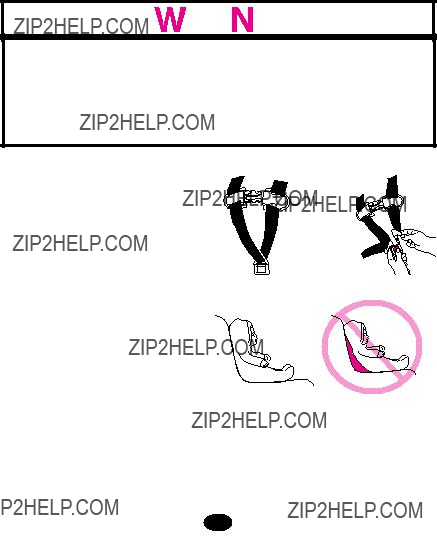
6.2 Securing Child in Infant Restraint
33
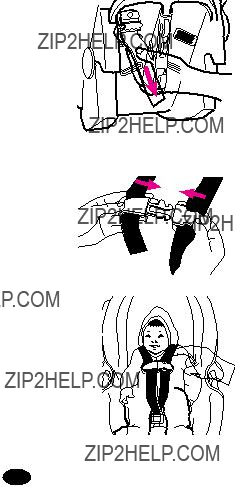
34
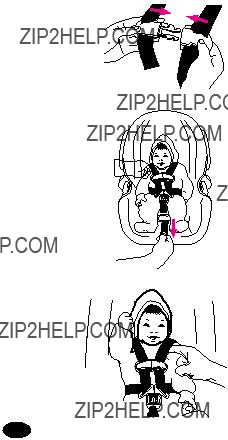
35
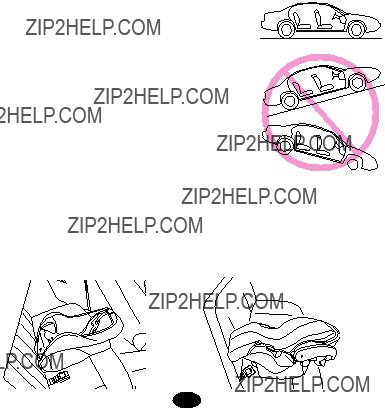
36
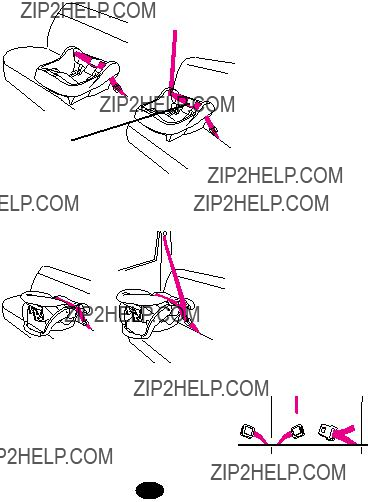
3. Thread the seat belt:
Base with seat belt
Belt MUST go under tongue
Infant restraint with seat belt
4.Buckle the seat belt. Make sure the buckle tongue goes into the??? correct buckle ???. The seat belt should not
be twisted or turned. 
37
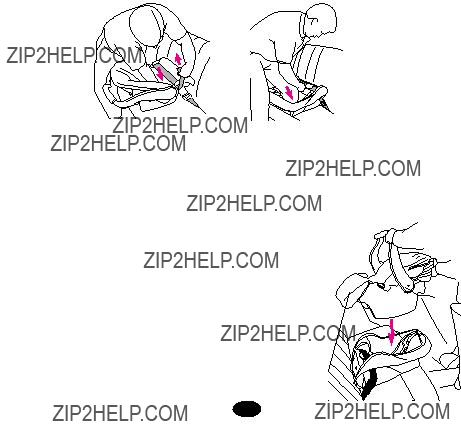
5. Tighten the vehicle seat belt. Refer to your vehicle owners manual and the instructions in ???5.2.2 SAFE Vehicle Belt Systems???, p.
To create a very tight installation, push down hard with your knee or free hand in the middle of the infant restraint or base ???
and pull and tighten the vehicle belt.
???
6.Push the infant restraint down into the base and make sure that you hear a ???click??? ???. Pull up on the infant restraint to be sure
it is latched securely into the base.
If the infant restraint does not securely??? latch into the base, the infant restraint
provides NO protection for your child. DO NOT use the infant restraint/base if the infant restraint does not securely
latch into the base. 




38


6.5 Reclining Infant Restraint/Base
For your child???s safety, it is important that your infant restraint/base be properly reclined. Attached to the side of your infant restraint is a level indicator to help properly recline the infant restraint/base on the vehicle seat.
Failure to properly recline the infant restraint on the vehicle seat increases the risk of serious injury or death.
If the infant restraint is too upright, a child???s head may drop forward and cause breathing problems.
If the infant restraint is too reclined, a crash could put too much force on a child???s neck and shoulders.
The infant restraint must be properly reclined
according to the following instructions.
Check the level indicator. You must look straight on at the indicator.
leveled.
40
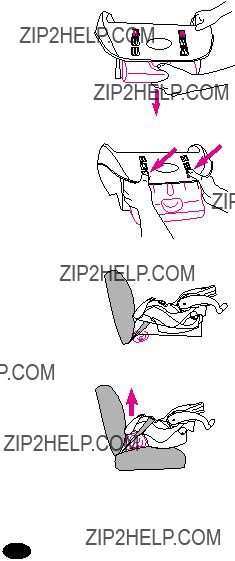
When using the base:
To lower the foot; pull down on the bottom of the foot to the desired setting to adjust the recline ???.
To raise the foot; set the base on a flat surface, push in on the fingers on the base and push down on the base to adjust the recline ???.
If there is still orange in the level indicator when the foot is completely extended then place a rolled towel under the foot until ONLY blue shows ???.
When using only the infant restraint, if there is still orange in the level indicator when the infant restraint is resting on the vehicle seat then place a rolled towel under the infant restraint until ONLY blue shows ???. Readjust the vehicle seat belt as necessary to secure the infant restraint firmly in the vehicle seat.
???
???
 ???
???
 ???
???
41
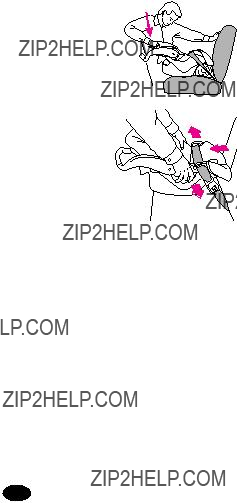
Final Safety Check: Every time you drive with your child,
PUSH DOWN on the top of the infant restraint slowly but firmly to make sure the vehicle belt does not lengthen at all and that the vehicle
belt or LATCH is fastened very tightly around the infant restraint/base ???.
Holding the infant restraint near the vehicle belt path, TWIST AND PULL the seat forward and to both sides to make sure the vehicle belt or LATCH does not lengthen or loosen and the infant restraint does not easily move ???.
???
???
42
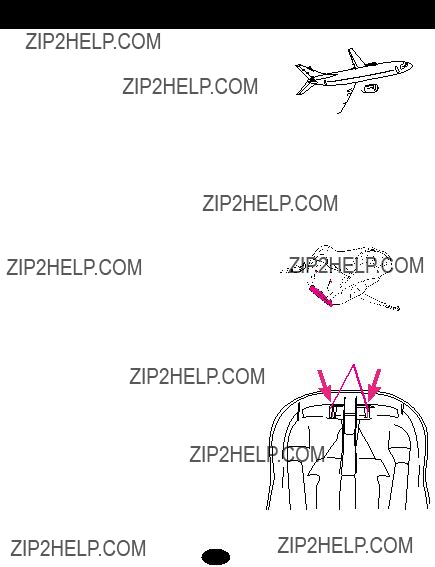
7.1 Airplane Use
Install in an airplane the same way as in an automobile. Notify the airline ahead of time that you intend to bring the seat on board.
Use only in
7.2Storing LATCH
1.For ease of storing, extend LATCH to its maximum length.
3.Fasten end of LATCH (without adjustment belt) onto storage bar as shown.
43
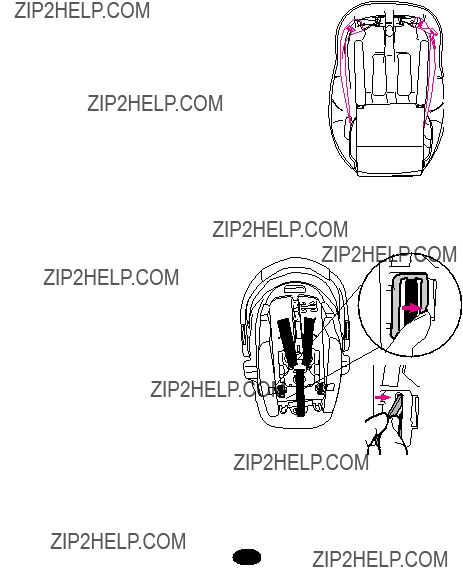
44

!INFANT RESTRAINT METAL AND PLASTIC PARTS may be cleaned by wiping with a mild soap and water solution. DO NOT USE BLEACH. Use of bleach may weaken plastic parts.
!HARNESSSTRAPSmay be spot cleaned or replaced. DO NOT IMMERSETHE HARNESS STRAPS IN WATER.Doingso may weaken the harness straps.
!BUCKLE may be cleaned with a damp cloth.
!DO NOT LUBRICATE the buckle.
!DO NOT USE INFANT RESTRAINT without seat pad.
!CONTINUOUS USE OF INFANT RESTRAINT MAY CAUSE DAMAGE TO VEHICLE SEAT.Use an infant restraint mat, towel or thin blanket to protect upholstery.
45

46
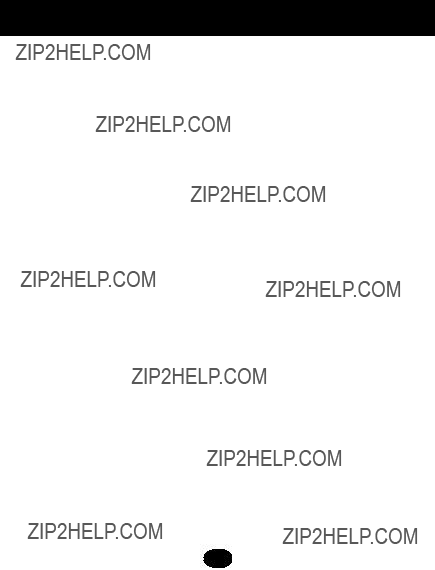
47

To purchase parts or accessories in the United States for your Graco product, please contact us at the following:
www.gracobaby.com or
48
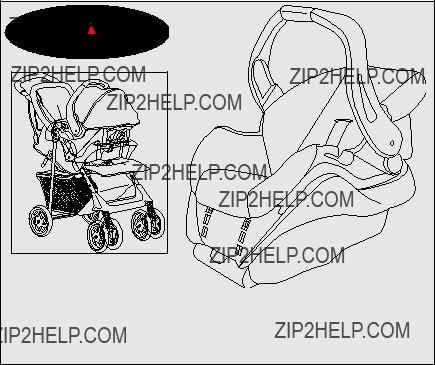
Asiento de seguridad infantil/portabeb??s
Manual del propietario

1.0 Advertencias a padres y otros
2.1 Registro de su sistema de seguridad para ni??os . . . . . . . .6 2.2 Informaci??n sobre el retiro de productos del mercado . . . .7 2.3 Si necesita ayuda . . . . . . . . . . . . . . . . . . . . . . . . . . . . . . . . .7
3.0 Funciones y
3.1 Modelo con arn??s de 3 puntos . . . . . . . . . . . . . . . . . . . . . .9 3.2 Modelo con arn??s de 5 puntos . . . . . . . . . . . . . . . . . . . . .11 3.3 Sacar y conectar la base . . . . . . . . . . . . . . . . . . . . . . . . . .13 3.4 Ajuste de la manija . . . . . . . . . . . . . . . . . . . . . . . . . . . . . .13 3.5 Colocaci??n de la capota (ciertos modelos) . . . . . . . . . . . .14 3.6 Armado de la almohadilla del asiento (ciertos modelos) . .15 3.7 Apoyacabezas (ciertos modelos) . . . . . . . . . . . . . . . . . . . .16 3.8 Bota para tiempo fr??o (ciertos modelos) . . . . . . . . . . . . . .16 3.9 Cubiertas del arn??s (ciertos modelos) . . . . . . . . . . . . . . . .17
4.0 Informaci??n
4.1 Advertencias para uso como sistema de seguridad
para ni??os . . . . . . . . . . . . . . . . . . . . . . . . . . . . . . . . . . . . .18 4.2 Advertencias para el uso con un cochecito . . . . . . . . . . . .20 4.3 Advertencias adicionales para el uso como transportador 21 4.4 Limitaciones de peso y estatura . . . . . . . . . . . . . . . . . . . .22
2

5.0 Ubicaci??n del sistema de seguridad para
5.1 Requisitos del asiento del veh??culo . . . . . . . . . . . . . . . . . .23 5.2 Requisitos del cintur??n de seguridad del veh??culo . . . . . .24 5.2.1Sistemas PELIGROSOS de cinturones para veh??culos25 5.2.2 Sistemas SEGUROS de cinturones para veh??culos .26 5.3 Ubicaci??n del LATCH . . . . . . . . . . . . . . . . . . . . . . . . . . . . .28
6.0 Usar el asientode seguridad
6.1 Colocaci??n de las correas del arn??s . . . . . . . . . . . . . . . . .29 6.1.1 Arn??s de 3 puntos . . . . . . . . . . . . . . . . . . . . . . . . . .30 6.1.2 Arn??s de 5 puntos . . . . . . . . . . . . . . . . . . . . . . . . . .31 6.2 C??mo sujetar el ni??o al sistema de seguridad para ni??os 33 6.2.1 Arn??s de 3 puntos . . . . . . . . . . . . . . . . . . . . . . . . . .34 6.2.2 Arn??s de 5 puntos . . . . . . . . . . . . . . . . . . . . . . . . . .35
6.3 Instalaci??n del sistema de seguridad para ni??os/base usando el cintur??n del veh??culo . . . . . . . . . . . . . . . . . . . . .36
6.4 Uso del LATCH para instalar la base . . . . . . . . . . . . . . . .39 6.5 Inclinaci??n del sistema de seguridad para ni??os/base . . .40
7.0 Informaci??n
7.1 Uso en aviones . . . . . . . . . . . . . . . . . . . . . . . . . . . . . . . . .43 7.2 Almacenamiento del LATCH . . . . . . . . . . . . . . . . . . . . . . .43 7.3 Limpieza y mantenimiento . . . . . . . . . . . . . . . . . . . . . . . . .45
Piezas de repuesto . . . . . . . . . . . . . . . . . . . . . . . . . . . . . . . . . . . . .48
3
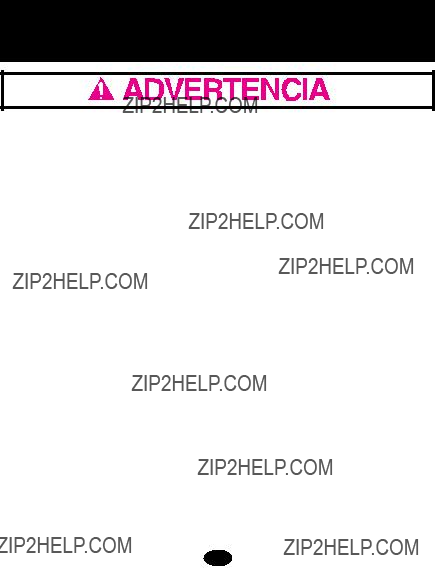
y otros usuarios
Ning??n asiento de seguridad infantil puede garantizar la protecci??n contra lesiones en todas las situaciones. Sin embargo, el uso correcto de este asiento de seguridad infantil reduce el riesgo de que su ni??o sufra lesiones serias o la muerte.
El uso incorrecto de este sistema de seguridad infantil aumenta el riesgo de graves lesiones o la muerte durante un giro brusco, una parada repentina o un accidente. La seguridad de su ni??o depende de la correcta instalaci??n y uso de este sistema de seguridad infantil. Incluso si el uso de este sistema de seguridad infantil le parece muy f??cil, es muy importante que LEA EL MANUAL DEL PROPIETARIO. El manual se encuentra en el bolsillo trasero del sistema de seguridad infantil. Tambi??n debe leer el manual del propietario
de su veh??culo.
La seguridad de su ni??o depende de:
1. Elegir una ubicaci??n adecuada en su veh??culo. Algunos asientos, tales como los equipados con bolsas de aire, pueden resultar ubicaciones inseguras para este sistema de seguridad infantil.
2. Insertar los cinturones en las ranuras apropiadas para su ni??o.
4

3.Sujetar a su ni??o de manera adecuada en el sistema de seguridad infantil.
4.Colocar el sistema de seguridad infantil/base en una posici??n orientada hacia atr??s.
5.Colocar el cintur??n de seguridad del veh??culo o LATCH de manera correcta.
6.Reclinar de manera correcta el sistema de seguridad infantil.
7.Sujetar el sistema de seguridad infantil de manera correcta en el veh??culo usando un cintur??n de seguridad dise??ado para sujetar un sistema de seguridad infantil o usando LATCH. Muchos cinturones de seguridad NO son seguros para su uso con sistemas de seguridad infantil, a pesar de que se colocan f??cilmente en
el mismo.
5
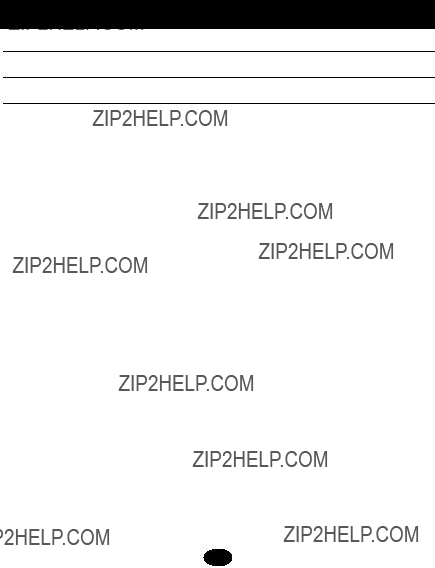
N??mero de modelo:
Fabricado en:
Fecha de compra:
2.1 Registro de su sistema de seguridad para ni??os
Por favor, complete la informaci??n que se solicita m??s arriba. Los n??meros de modelo y fabricado en (fecha) pueden encontrarse en una etiqueta ubicada debajo del sistema de seguridad para ni??os. Llene la tarjeta postal de registro prepagada que se encuentra en la funda del asiento y env??ela hoy mismo.
Los dispositivos de seguridad para ni??os podr??n ser retirados del mercado por problemas de seguridad. Debe registrar este sistema para que lo podamos contactar en dicho caso. Env??e su nombre y apellido, direcci??n y n??meros de serie y de modelo a:
Graco Children???s Products Inc.
150 Oaklands Blvd.
Exton, PA 19341
o llame al
6

2.2 Informaci??n sobre el retiro de productos del mercado
??? Llame a la l??nea telef??nica sobre seguridad en autom??viles del gobierno de EE.UU. al
??? Graco:
2.3 Si necesita ayuda
En los EE.UU. o Canad??, por favor, comun??quese con el Departamento de Servicio al Cliente con cualquier pregunta que pudiera tener sobre piezas, uso o mantenimiento. Cuando se ponga en contacto con nosotros, por favor tenga listo los n??meros de modelo y de serie de su producto para que lo podamos ayudar m??s eficientemente. Estos n??meros pueden encontrarse en una etiqueta ubicada en la parte inferior del sistema de seguridad para ni??os.
EE.UU.:
Canad??:
7
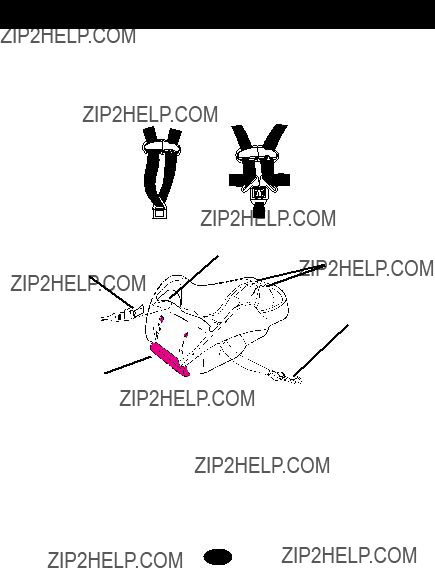
Cada modelo del sistema de seguridad para ni??os viene con diferentes opciones en el arn??s. Para ajustar debidamente el sistema de seguridadpara ni??os, es muy importante que observe las instruccionesque son apropiadas para el modelo que compr??.
Las Normas Federales para Seguridad de Autom??viles de Estados Unidos han determinado un nuevo sistema de instalaci??n de asientos de seguridad en los veh??culos. El sistema se denomina LATCH.
* LATCH debe usarse EN LUGAR del cintur??n del veh??culo SOLAMENTE si el veh??culo est?? equipado con puntos de anclaje LATCH.
Por favor, consulte el manual del propietario del veh??culo para obtener las ubicaciones donde debe instalarse el8LATCH.

3.1 Modelo con arn??s de 3 puntos
VISTA DELANTERA: ARN??S DE 3 PUNTOS
Ranura para el
arn??s
Traba del arn??s
Manija
Bot??n de ajuste de la manija
Gancho del cintur??n del veh??culo
9
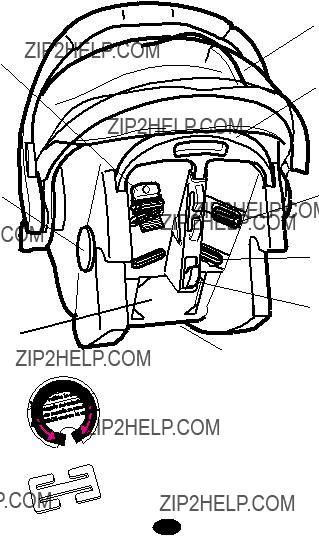
Tensionador
del arn??s
Indicador
del nivel*
Bolsillo del manual del propietario
*Indicador del nivel
**Traba de seguridad
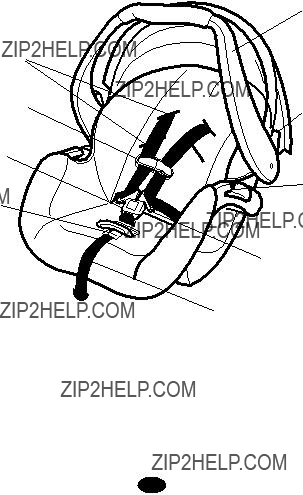
3.2 Modelo con arn??s de 5 puntos
11
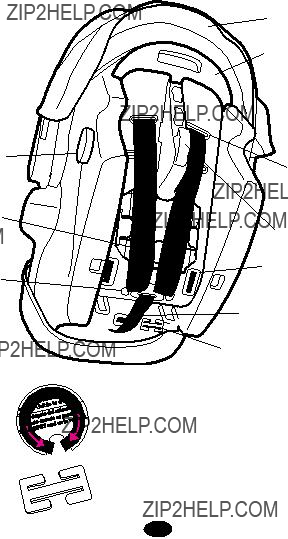
Indicador del nivel* Bolsillo del manual del
propietario
Placa de la uni??n de metal
*Indicador del nivel
**Traba de seguridad
VISTA TRASERA: ARN??S DE 5 PUNTOS Capota
(en ciertos modelos) Manija de liberaci??n
Ranura para el arn??s
Traba de conexi??n
Hebilla del anclaje de la correa de la cintura
Correa de ajuste del arn??s
Traba de seguridad**
El indicador de nivel se conecta al costado del sistema de seguridad para ni??os e indica si el sistema de seguridad para ni??os est?? debidamente inclinado.
La traba de seguridad se guarda en el fondo del sistema de seguridad para ni??os. Necesitar?? usarlo con ciertos tipos de cinturones de
 seguridad de autom??viles.
seguridad de autom??viles.
12
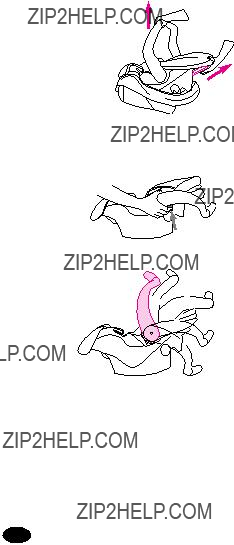
3. Empuje y tire de la manija para asegurarse que est?? trabada firmemente en su lugar.
13
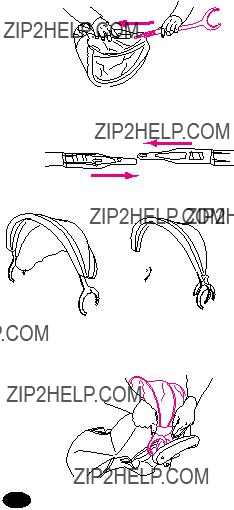
3.En modelos con cuatro apoyos de la capota, repita los pasos uno y dos
para el otro t??nel de la capota. La capota deber?? tener este aspecto ???.
4.Sujete la capota en los lugares entre el sistema de seguridad para ni??os y la base de la manija ???.
Para quitar la capota, siga los pasos al rev??s.
???
O 


???
14
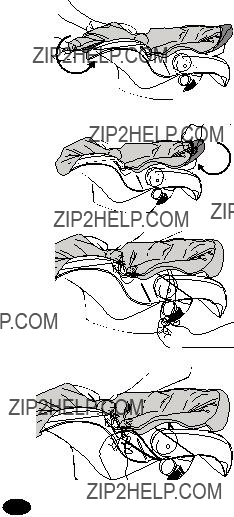
otro costado de la almohadilla del asiento.
15
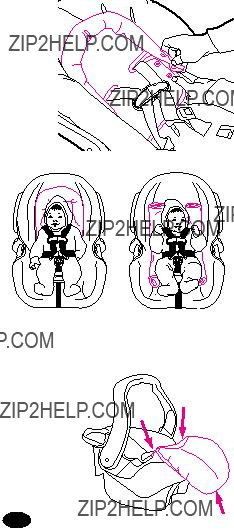
trabarlos con las correas del arn??s pasadas a trav??s de las ranuras en el coj??n ???.
Si su modelo no incluye un apoyacabezas, puede usar una toalla enrollada o una manta como apoyo ???. ASEG??RESE
QUE NADA INTERFIERA CON EL ARN??S. Debe quedar plano y ajustarse sobre los hombros del ni??o.
3.8 Bota para tiempo fr??o (en ciertos modelos)
Algunos modelos vienen con una bota para tiempo fr??o. Para usarla, ponga el??stico alrededor del fondo del asiento y coloque el??stico alrededor de los ganchos
del cintur??n del veh??culo como se indica ???.
???
???
16
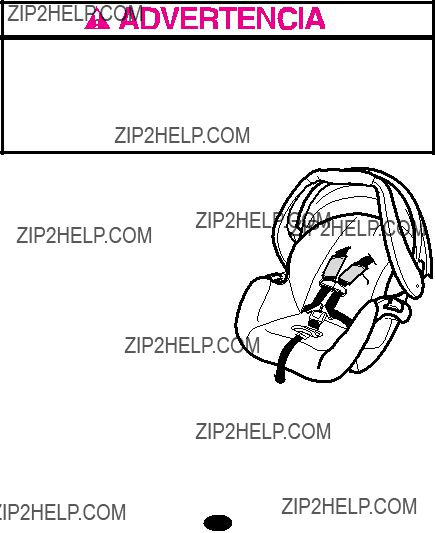
3.9 Cubiertas de arnes (ciertos modelos)
Para prevenir la eyecci??n en un accidente o parada repentina:
??? Aseg??rese siempre que las correas del hombro pasan por las ranuras y est??n debidamente instaladas en los hombros.
??? Aseg??rese de que las cubiertas del arn??s no interfieran con la colocaci??n del pasador del pecho a la altura de las axilas.
17
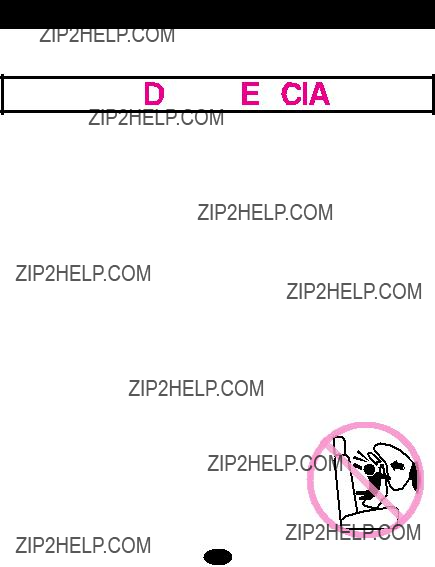
4.1 Advertencias para uso como sistema de seguridad para ni??os
??? NO INSTALE O USE ESTE SISTEMA DE SEGURIDAD PARA
NI??OS Y BASE HASTA QUE HAYALE??DO Y ENTIENDA LAS
INSTRUCCIONES EN ESTE MANUAL Y EN EL MANUAL DEL PROPIETARIO DE SU VEH??CULO. NO deje que otros instalen o usen el sistema de seguridad para ni??os a menos que entiendan c??mo usarlo.
??? NO USAR DEBIDAMENTE ESTE SISTEMA DE SEGURIDAD
PARA NI??OS Y BASE AUMENTA EL RIESGO DE LESIONES
SERIAS O FATALESEN UN ACCIDENTE O AL DETENERSE DE REPENTE. Su ni??o puede sufrir una lesi??n en un veh??culo aunque no sufra un accidente. Una frenada repentina o una curva cerrada puede lesionar a su ni??o si el sistema de seguridad para ni??os no est?? debidamente instalado o si el ni??o no est?? debidamente sujetado en el sistema de seguridad para ni??os.
??? ESTE SISTEMA DE SEGURIDAD PARA NI??OS DEBE ESTAR ORIENTADO HACIA ATR??S cuando se lo usa en el veh??culo.
??? NO PONGA ESTE SISTEMA DE SEGURIDADPARA NI??OS EN
UN ASIENTO DEL VEH??CULO QUE TENGA INSTALADOUNA BOLSA DE AIRE DELANTERA.Si la bolsa
de aire se infla, puede golpear al ni??o y al sistema de seguridad para ni??os con mucha fuerza y causar lesiones serias o la muerte de su ni??o.Consulte el manual del due??o del veh??culo para obtener informaci??n sobre las bolsas de aire laterales y la instalaci??n del sistema de seguridad para ni??os.
18

???ALGUNOS NI??OS CON NECESIDADES ESPECIALES, tales como beb??s que nacen antes de tiempo o quienes sufren de apnea de posici??n, podr??an sufrir m??s riesgo de sufrir problemas respiratorios u otras dificultades en un sistema de seguridad para ni??os. Si su ni??o tiene necesidades especiales, recomendamos que su m??dico o personal del hospital eval??e a su ni??o y recomiende el sistema de seguridad para ni??os adecuado para su beb?? o cama para el autom??vil antes de usar este producto.
???Seg??n las estad??sticas de accidentes, LOS NI??OS EST??N M??S
SEGUROS CUANDO EST??N DEBIDAMENTE SUJETADOS EN
LOS ASIENTOS TRASEROS DEL VEH??CULO EN LUGAR DE LOS ASIENTOS DELANTEROS. En el caso de un veh??culo con una bolsa de aire para el pasajero delantero, consulte el manual del propietario de su veh??culo as?? como estas instrucciones para la instalaci??n del sistema de seguridad para ni??os.
???NUNCA DEJE A SU NI??O SOLO.
???NUNCA DEJE UN SISTEMA DE SEGURIDAD PARA NI??OS Y LA BASE SIN SUJETAR EN SU VEH??CULO. Un asiento o base sin sujetar puede ser arrojado y podr??a lesionar a los ocupantes en una curva cerrada, parada repentina o accidente. S??quelo o aseg??rese de que est?? debidamente sujetado en el veh??culo. Si no usa el LATCH, aseg??rese que los conectores del LATCH que no est??n enganchados est??n debidamente almacenados en la base.
???CAMBIEEL SISTEMADE SEGURIDADPARA NI??OSY LA BASE DESPU??S DE UN ACCIDENTE DE CUALQUIER TIPO. Un accidente puede causar da??o invisible al sistemade seguridad para ni??os.
???DEJE DE USAR EL SISTEMA DE SEGURIDAD PARA NI??OS Y LA BASE Y T??RELO despu??s de la fecha indicada en el respaldo del sistema de seguridad para ni??os.
???NO MODIFIQUE SU SISTEMA DE SEGURIDAD PARA NI??OS Y BASE o ni use cualquier accesorio o piezas suministradas por otros fabricantes.
19

???NUNCA USE EL SISTEMA DE SEGURIDAD PARA NI??OS Y LA
BASE SI HAN RESULTADO DA??ADOS O FALTAN PIEZAS.
NO use un arn??s de sistema de seguridad para ni??os o cintur??n del asiento del veh??culo o cintur??n del LATCH roto, deshilachado o da??ado.
???EL SISTEMA DE SEGURIDAD PARA NI??OS PUEDE ALCANZAR ALTAS TEMPERATURAS SI QUEDA EN EL SOL. Toque siempre la superficie de cualquier pieza de metal o de pl??stico antes de poner a su ni??o en el sistema de seguridad para ni??os.
???ESTE SISTEMADE SEGURIDAD PARANI??OS CUMPLE con todas las Normas Federales de Seguridad para Veh??culos Automotor y ha sido certificado para el uso en veh??culos automotor y aeronaves.
???NUNCA ENTREGUE ESTE SISTEMA DE SEGURIDAD PARA NI??OS Y BASE a otra persona sin entregarles este manual.
???NUNCA USE UN SISTEMA DE SEGURIDAD PARA NI??OS Y BASE USADOS o un sistema de seguridad para ni??os si no conoce su historia.
4.2 Advertencias para el uso con un cochecito
??? USAR SOLAMENTE CON COCHECITOS QUE SON PARTE DEL SISTEMA DE VIAJES GRACO. Consulte la hoja de instrucciones del cochecito para obtener m??s informaci??n sobre la conexi??n del sistema de seguridad para ni??os a su cochecito. Si no tiene una hoja de instrucciones, por favor llame gratis al
??? El uso inadecuado de asientos para autom??vil Graco con este cochecito de otros fabricantes podr??a resultar en lesiones serias o la muerte.
20
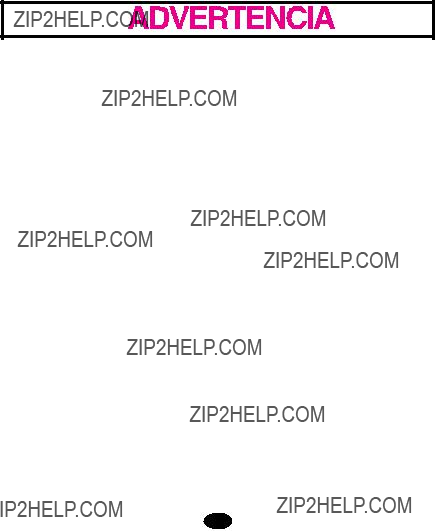
4.3Advertencias adicionales para el uso como transportador
??? PELIGRO DE CA??DA: Los movimientos del ni?? o pueden mover el transportador.
o pueden mover el transportador.
NUNCA ponga el transportador cerca de los bordes de mesadas, mesas u otras superficies altas. Mant??ngase siempre cerca cuando el transportador no est?? en el piso/tierra.
Antes de levantar el transportador, ASEG??RESE que las manijas est??n trabajadas en posici??n.
No ponga NUNCA el transportador encima de un carrito de compras.
??? PELIGRO DE ASFIXIA: En superficies blandas, el transportador para beb?? puede darse la vuelta y asfixiar al ni??o. Nunca ponga el transportador sobre una cama, sof?? u otra superficie blanda.
??? PELIGRO DE ESTRANGULACI??N: El ni??o puede estrangularse con las correas de seguridad sueltas. Use siempre el arn??s, no deje nunca al ni??o en el transportador cuando las correas est??n sueltas o sin atar.
??? GUARDE LOS CORDONES Y CUERDAS FUERA DEL ALCANCE DEL NI??O. Los cordones y cuerdas pueden causar la estrangulaci??n.
NO coloque el transportador cerca de una ventana donde los cordones de las cortinas o persianas puedan estrangular al ni??o. NO cuelgue cordones sobre o encima del transportador.
NO coloque art??culos con un cord??n alrededor del cuello del ni??o, tales como cordones de capucha, cord??n del chupete, etc.
NO ponga cordones a los juguetes.
21
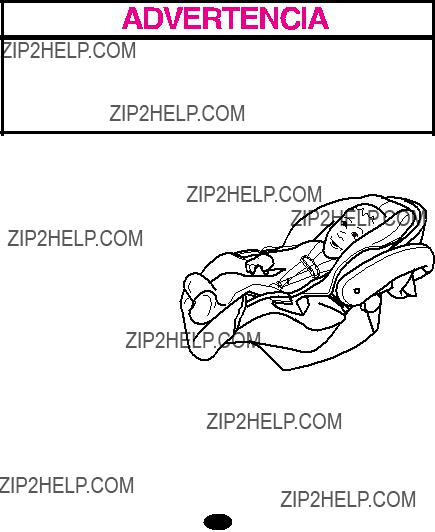
4.4 Limitaciones de peso y estatura
NO USAR EL SISTEMA DE SEGURIDAD PARA NI??OS DE
MANERA APROPIADA DE ACUERDO AL TAMA??O DE SU NI??O
PODR??A AUMENTAR EL RIESGO DE QUE SUFRA LESIONES
SERIAS O FATALES.
Su ni??o DEBE cumplir con todos los requisitos:
??? PESO:
??? ESTATURA: 29 pulgadas (73 cm) o menos
22
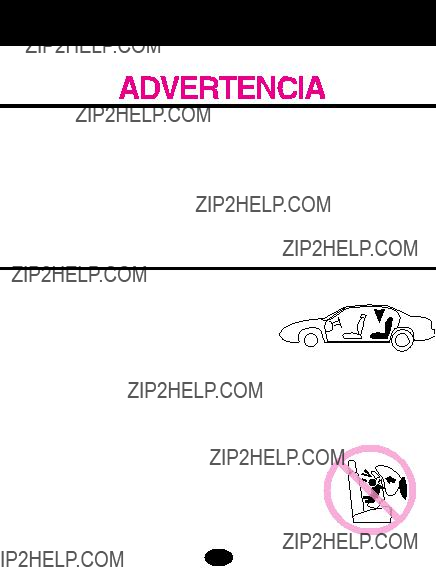
para ni??os
5.1 Requisitos del asiento del veh??culo
DELANTERA???. Vea "4.1 Advertenciaspara uso como sistema de seguridad para ni??os", p??gina18.
23

??? El asiento del VEH??CULO debe estar orientado hacia adelante
??? NO USE el sistema de seguridad para ni??os en asientos del veh??culo con respaldos que no traben en la posici??n vertical. NO use asientos que se puedan plegar sin tener que liberar una traba o dispositivo de alg??n tipo. Estos asientos pueden desplazarse hacia adelante y golpear al ni??o en un accidente o parada repentina.
5.2 Requisitos del cintur??n de seguridad del veh??culo
MUCHOS CINTURONES DE SEGURIDAD NO SE PUEDEN USAR
CON CONFIANZA CON ESTE SISTEMA DE SEGURIDAD PARA
NI??OS. EL CINTUR??N DE SEGURIDAD DEL VEH??CULO DEBE
HABER SIDO DISE??ADO PARA RETENER AL SISTEMA DE
SEGURIDAD PARA NI??OS DE MODO AJUSTADO EN TODO
MOMENTO.
Preste mucha atenci??n a estos sistemas ya que muchos de los sistemas de cinturones de seguridad que no son seguros se parecen mucho a los que no presentan peligro. Si no est?? seguro, consulte el manual del propietario del veh??culo o llame a Graco
al
24
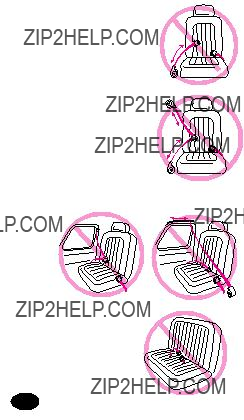
5.2.1 Sistemas PELIGROSOS de cinturones para veh??culos
NO USE ningunode los siguientessistemas para asegurarel sistema de seguridad para ni??os.
El LATCH se puede usar EN LUGAR DE el sistema de cinturon para veh??culo. Por favor, consulte el manual del propietario del veh??culo para obtener las ubicaciones donde debe instalarse el
LATCH.
??? Cintur??nde seguridadabdominal con retractor de traba de emergencia (EmergencyLockingRetractor,ELR)
Este cintur??n de seguridad abdominal se mantiene flojo y puede moverse hasta que se trabe en un accidente o parada repentina.
??? Combinaci??n de cintur??n abdominal y para el hombro con retractor
Cada correa tiene un retractor en una punta y est?? conectada a la placa de seguridad en la otra punta.
??? Cintur??npasivo - Cintur??nabdominal con cintur??n para el hombro motorizado
??? Cintur??npasivo - Cintur??npara el hombro o abdomen montado en la puerta
NO use los cinturones del veh??culo que est??n enganchados a la puerta de manera alguna o que se muevan a trav??s de un carril para rodear autom??ticamente al pasajero cuando se cierra la puerta.
??? Cintur??n de seguridad abdominal que est??n
m??s adelante del pliegue del asiento
25

5.2.2 Sistemas SEGUROS de cinturones para veh??culos
LOS SIGUIENTESCINTURONESDE SEGURIDAD PUEDEN USARSE CON SU SISTEMA DE SEGURIDAD PARANI??OS, SI el asiento cumple con todos los otros requisitos de estas instrucciones y los que se incluyen en el manual del propietario de su veh??culo. Se puede usar el LATCH en lugar de el sistema de seguridad del veh??culo. Por favor, consulte el manual del propietario del veh??culo para identificar las ubicaciones donde debe instalarseel LATCH.
??? Cintur??n de seguridad abdominal - ajustado manualmente
Cuando est?? trabado, se tensiona manualmente el cintur??n tirando del exceso
de la correa mientras se empuja con fuerza hacia abajo sobre el sistema de seguridad para ni??os.
??? Cintur??n de seguridad abdominal con retractor de seguridad autom??tico (ALR)
El retractor de seguridad autom??tico no permitir?? que el cintur??n de seguridad abdominal se extienda una vez que est?? sujetado en la hebilla. Ajuste el cintur??n pasando el cintur??n por el retractor mientras empuja con
fuerza el sistema de seguridad para ni??os hacia abajo.
??? Combinaci??n cintur??n para el hombro/abdomen y con placa de seguridad con
cintur??n que est?? en el abdomen se afloje. El cintur??n se ajusta tirando con fuerza de la parte del hombro del cintur??n del veh??culo mientras empuja con fuerza el sistema de seguridad para ni??os hacia abajo.
26

??? Combinaci??n cintur??n para el hombro/abdomen y placa de seguridad con traba m??vil
Este cintur??n tiene una placa de seguridad que se mueve libremente a lo largo del cintur??n.
Este cintur??n DEBE convertirse para prevenir el movimiento de la parte de la falda del cintur??n.
Debe usar la traba de seguridad provista con el Traba de seguridad sistema de seguridad para ni??os, a menos que el
cintur??n de seguridad del asiento de su veh??culo pueda convertirse de otra manera como se describe en el manual del propietario del veh??culo.
Para instalar la traba de seguridad:
1. Ajuste el cintur??n empujando con fuerza el sistema de seguridad para ni??os hacia abajo y tirando con fuerza el cintur??n para el hombro.
2. Mientras empuja el asiento hacia abajo, apriete las dos correas juntas detr??s de la leng??eta de la hebilla. Destrabe el cintur??n sin permitir que se mueva.
3. Conecte los cinturones abdominal y para el hombro con la traba de
4. seguridad como se indica ??? y ???. Vuelva a poner el cintur??n en la hebilla. Verifique que el cintur??n abdominal no se mueve tirando y empujando el sistema de seguridad para ni??os. Si el cintur??n se afloja o se alarga, repita el procedimiento.
27
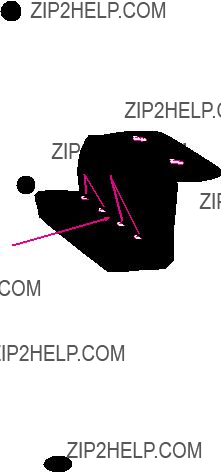
Vea el manual del propietario de su veh??culo para informarse sobre las ubicaciones exactas, la identificaci??n de los anclajes y los requisitos de uso con el sistema de seguridad para ni??os.
Un asiento t??pico de un veh??culo de pasajeros. Otros tipos de veh??culos disponen de otras ubicaciones del sistema LATCH o otros marcados.Puntos de anclaje
inferior del veh??culo
Pliegue del asiento del veh??culo
LATCH se define como anclajes de hasta 280 mm (11,02 pulgadas) en el centro. Como fabricante, no recomendamos el uso del sistema LATCH en la posici??n central si sobrepase esta longitud.
28
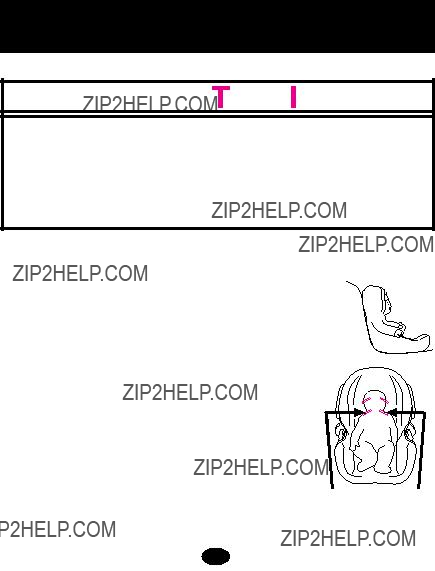
infantil
6.1 Colocaci??n de las correas del arn??s
29
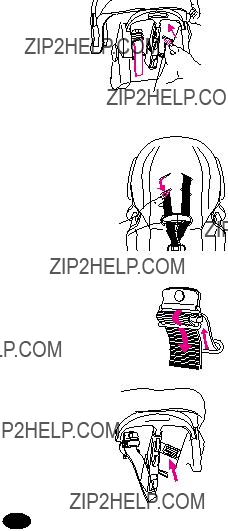
30
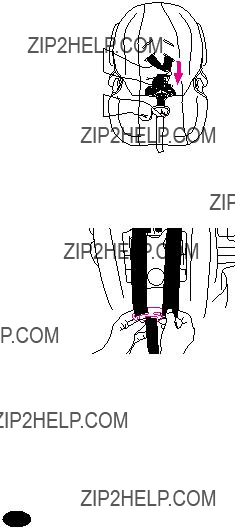
a) VERIFIQUE que las correas del arn??s no est??n dobladas adelante o atr??s.
b) VERIFIQUE que las correas est??n aseguradas tirando de las mismas.31
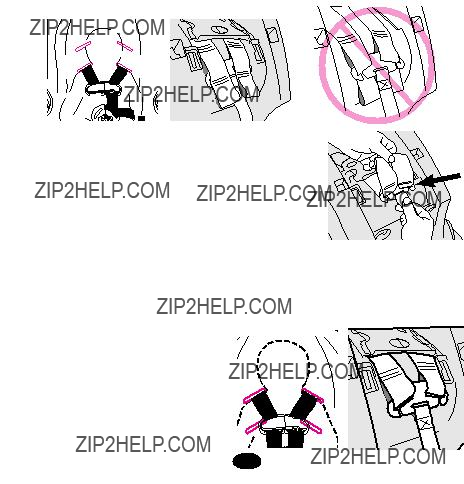
32

6.2C??mo sujetar el ni??o en al sistema de seguridad para ni??os
ni??os como se indica en ???, no ???. Pase las correas del arn??s sobre su ni??o.
4. Siga las instrucciones seg??n su arn??s:
6.2.1 Arn??s de 3 puntos: p??gina 34
6.2.2 Arn??s de 5 puntos: p??gina 35
33
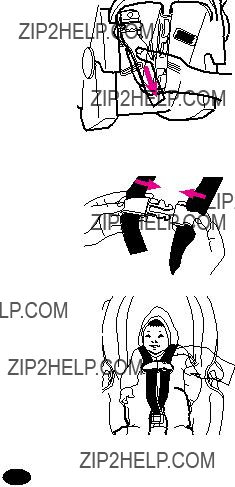
34

35
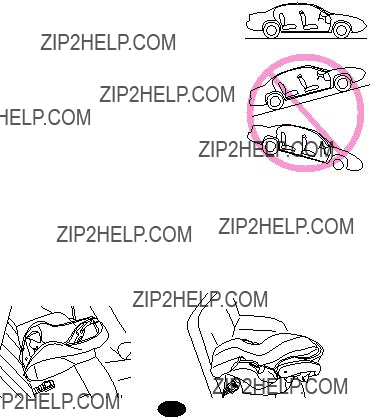
36
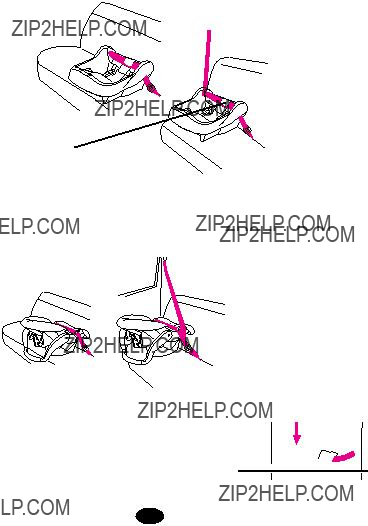
3. Pase el cintur??n de seguridad:
Base con cintur??n de seguridad
El cintur??n DEBE pasar debajo de la leng??eta.
Sistema de seguridad para ni??os con cintur??n de seguridad
4.Trabe el cintur??n del asiento. Aseg??rese que la leng??eta de la??? hebilla pase por la hebilla correcta ???.
El cintur??n del veh??culo no deber?? estar
doblado ni dar vuelta. 



37
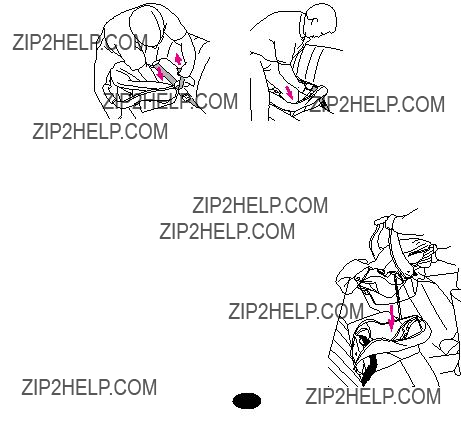
5.Ajuste el cintur??n de seguridad del veh??culo. Consulte el manual del propietario del veh??culo y las instrucciones en la secci??n "5.2.2. "Sistemas SEGUROS de cinturones de seguridad para veh??culo", p??gina 26 y 27 sobre c??mo ajustar el cintur??n del veh??culo.
Para crear una instalaci??n bien ajustada, apriete hacia abajo con fuerza con su rodilla o mano en el medio del sistema de seguridad para ni??os o base ??? y tire y apriete el cintur??n de seguridad del veh??culo.???

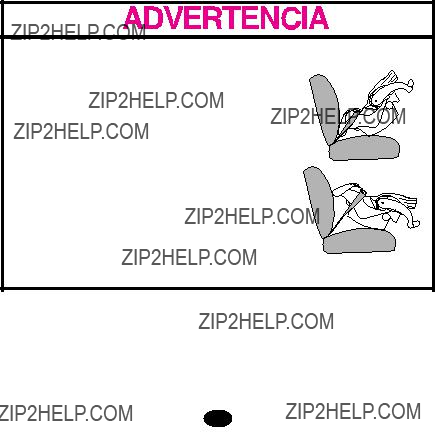
6.5 Inclinaci??n del sistema de seguridad para ni??os/base
Es importante que su sistema de seguridad para ni??os/base est?? debidamente inclinado para mayor seguridad del ni??o. En el costado de su sistema de seguridad para ni??os hay un indicador del nivel para ayudar a reclinar debidamente el sistema de seguridad para ni??os/base en el asiento del veh??culo.
No reclinar debidamente el sistema de seguridad para ni??os en el asiento del veh??culo aumenta el riesgo de
lesiones serias o fatales.
Si el sistema de seguridad para ni??os est?? demasiado vertical, la cabeza del ni??o podr??a caer hacia adelante y causar problemas a la respiraci??n.
Si el sistema de seguridad para ni??os est?? demasiado inclinado, un accidente podr??a ejercer demasiada fuerza en el cuello y hombros del ni??o.
El sistema de seguridad para ni??os debe estar debidamente inclinado seg??n las siguientes instrucciones.
Verifique el indicador del nivel. Debe mirar de frente al indicador.
el sistema de seguridad est?? debidamente nivelado.
40

Cuando usa la base:
Para bajar el pie; tire hacia abajo del fondo del pie hasta alcanzar el valor deseado para ajustar la inclinaci??n ???.
Para levantar el pie; ponga la base en una superficie plana, empuje hacia adentro los dedos de la base y empuje hacia abajo la base para ajustar la inclinaci??n ???.
Si todav??a aparece la zona de color naranja en el indicador de nivel cuando el pie est?? completamente extendido, entonces coloque una toalla enrollada debajo del pie SOLAMENTE hasta que aparezca la zona de color azul ???.
Cuando usa solamente el sistema de seguridad para ni??os, si todav??a aparece la zona de color naranja en el indicador de nivel cuando el sistema de seguridad para ni??os est?? instalado en el asiento del veh??culo, coloque una toalla enrollada debajo del sistema de seguridad para ni??os hasta que SOLAMENTE se vea la zona de color azul ???.
Vuelva a ajustar el cintur??n de seguridad del veh??culo lo necesario para sujetar firmemente el sistema de seguridad para ni??os al asiento del veh??culo.
???
???
 ???
???
 ???
???
41
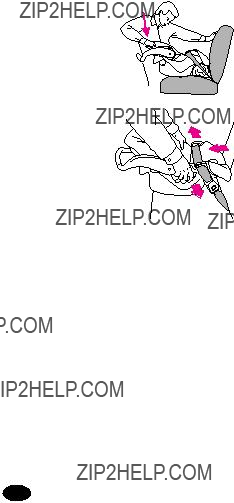
Verificaci??n final de seguridad: Cada vez que sale en el autom??vil con su ni??o,
EMPUJE HACIA ABAJO lenta pero firmemente la parte de arriba del sistema de seguridad para ni??os para asegurarse que el cintur??n del veh??culo o LATCH no se estira y que est?? sujetado apretadamente alrededor de la base/sistema de seguridad ??? .
GIRE Y TIRE el asiento hacia adelante agarrando el sistema de seguridad cerca del recorrido del cintur??n del veh??culo y en ambos costados para asegurarse que el cintur??n del veh??culo o
no se alargue ni se afloje y que no se puedaLATCH mover el sistema de seguridad con facilidad ???.
???
???
42
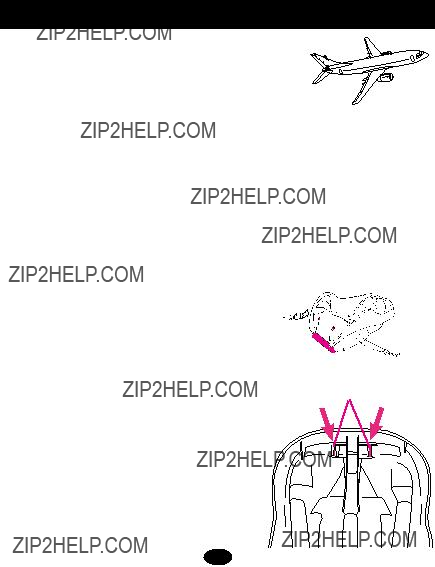
7.1 Uso en aviones
Inst??lelo en un avi??n de la misma manera que en un autom??vil. Notifique a la compa????a
a??rea por adelantado que va a usar el asiento abordo.
??selo solamente en un asiento del aeronave orientado hacia delante. Siga las instrucciones del personal de vuelo sobre la colocaci??n del asiento de seguridad infantil. No use este asiento de seguridad infantil si el cintur??n de seguridad del avi??n no sujeta el asiento de seguridad infantil firmemente.
7.2 Almacenamiento del LATCH
1. Para facilitar el almacenamiento, extienda el LATCH hasta el m??ximo.
2. Ubique las barras de almacenamiento en el fondo de la base del sistema de seguridad ???.
3. Ajuste el extremo del LATCH (sin el cintur??n de ajuste) sobre la barra de almacenamiento como se indica.
43
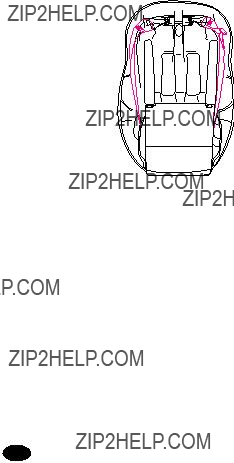
Parte inferior de la base
44
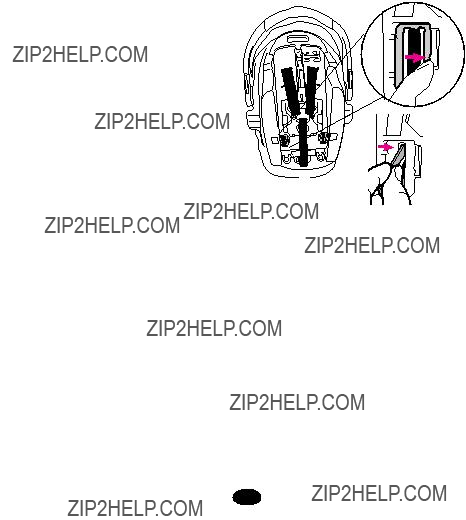
45

!LAS PIEZAS DE METAL Y DE PL??STICO DEL SISTEMA DE SEGURIDAD PARA NI??OS pueden limpiarse con una soluci??n de jab??n suave y agua. NO USE CLORO. El uso de cloro puede debilitar las piezas de pl??stico.
!LAS CORREASDELARN??SY LAS CORREASDEL LATCHpueden limpiarse a mano o cambiarse.NO SUMERJALAS CORREASDEL ARN??S EN AGUA. Hacerlopodr??aaflojarlas correasdel arn??s.
!La HEBILLA puede limpiarse con un trapo h??medo.
!NO LUBRIQUE la hebilla.
!NO USE EL SISTEMA DE SEGURIDAD PARA NI??OS sin la almohadilla para el asiento.
!USO CONTINUO DEL SISTEMA DE SEGURIDAD PARA NI??OS PODR??A CAUSAR DA??O AL ASIENTO DEL VEH??CULO. Use una estera para el sistema de seguridad para ni??os, toalla o frazada fina para proteger el tapizado.
46
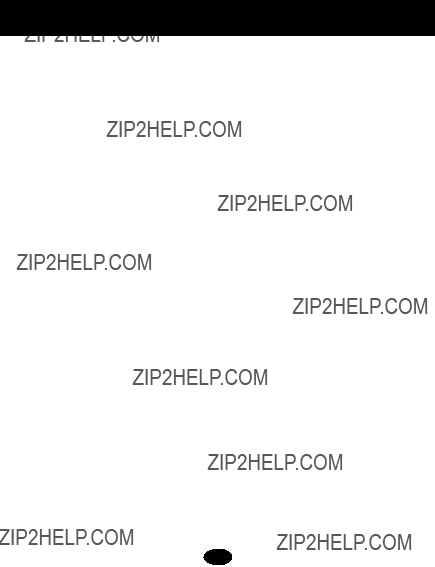
47
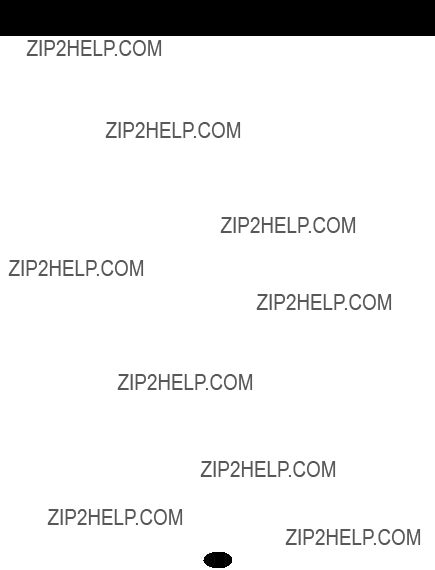
Para comprar repuestos o accesorios en los Estados Unidos para su producto Graco, por favor comun??quese con nosotros en:
www.gracobaby.com o
48